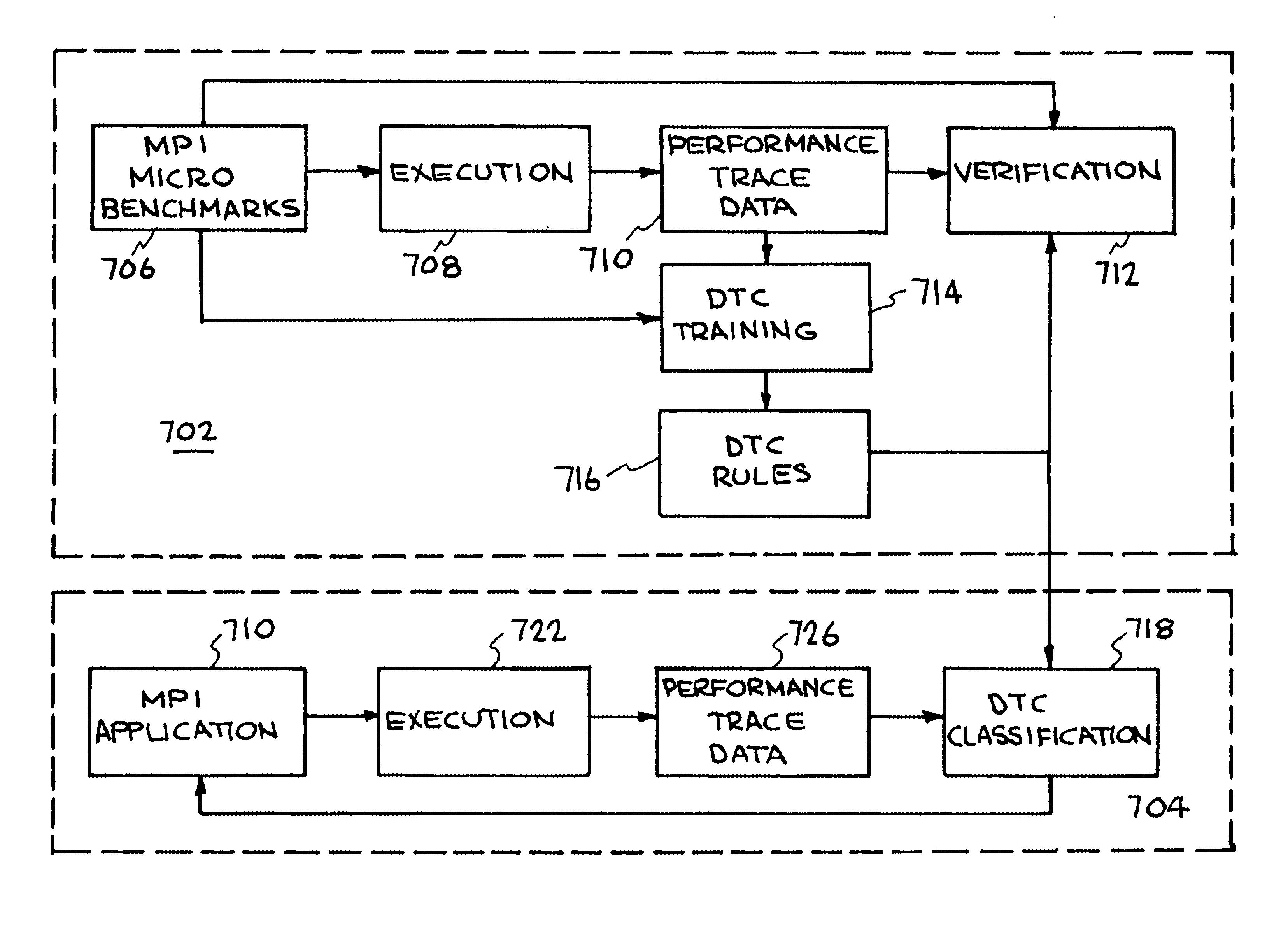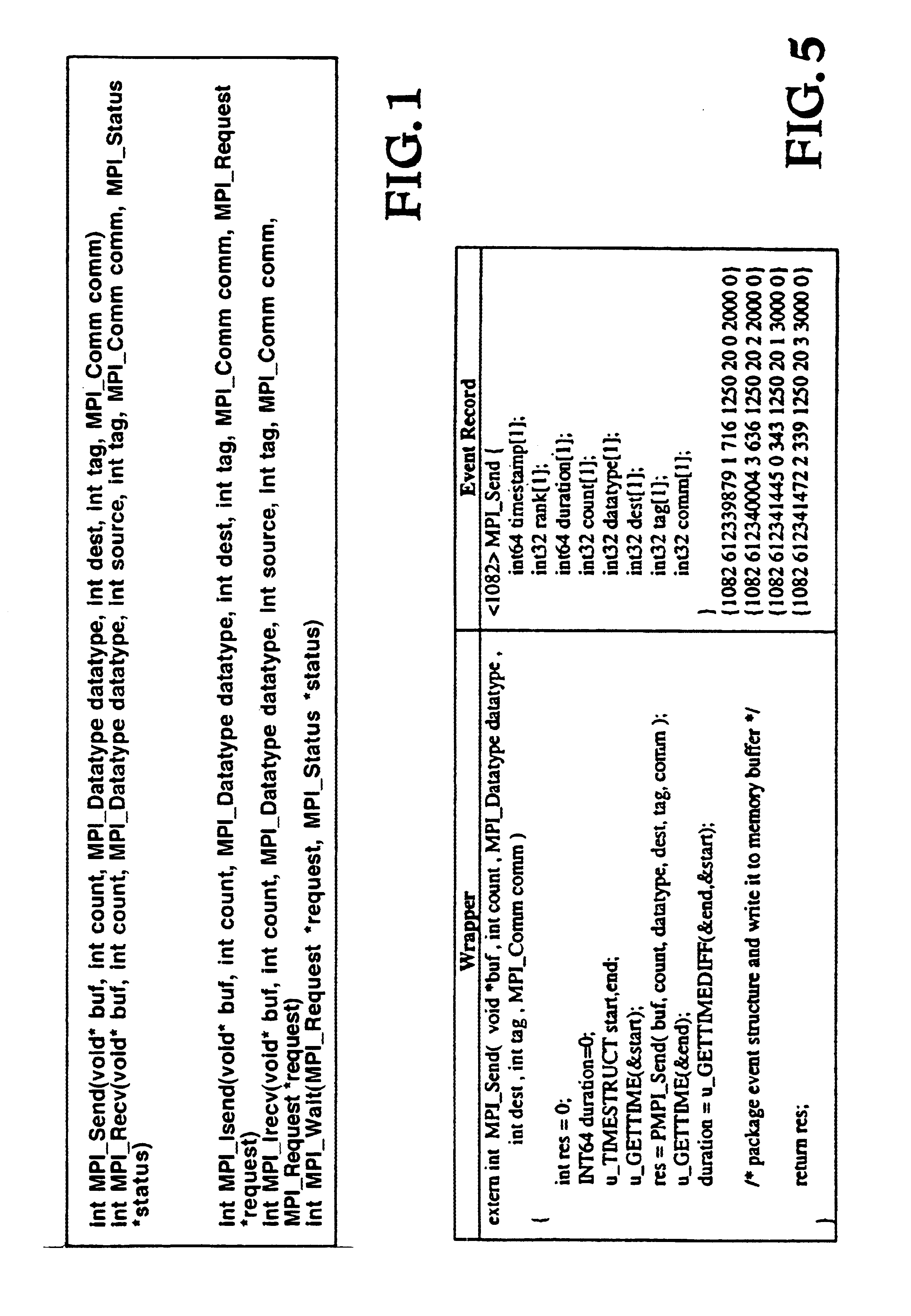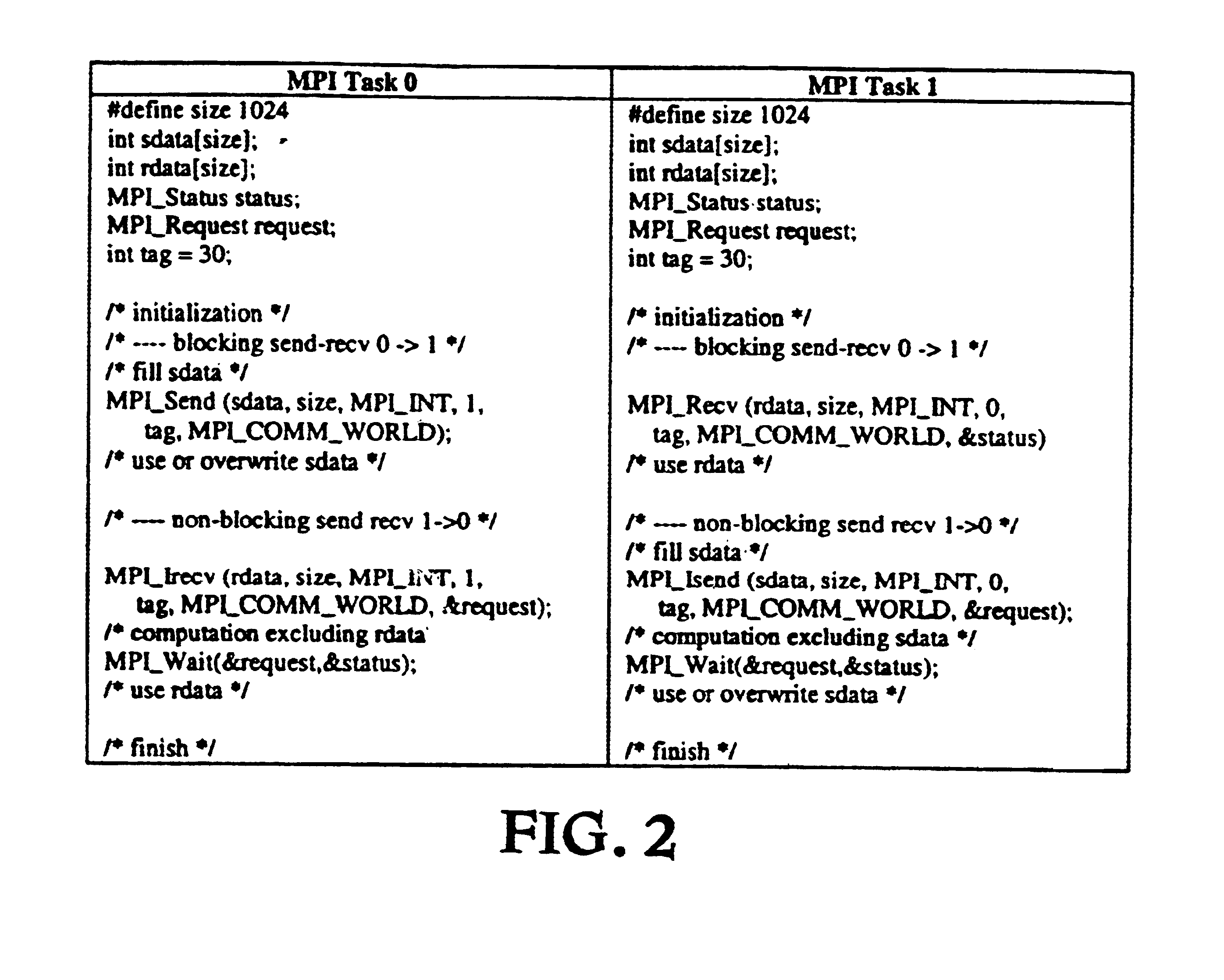Performance analysis of distributed applications using automatic classification of communication inefficiencies
a technology of automatic classification and performance analysis, applied in the field of performance analysis, can solve problems such as communication inefficiencies, difficulty in comprehending performance of distributed applications, and even more complex comprehension
- Summary
- Abstract
- Description
- Claims
- Application Information
AI Technical Summary
Problems solved by technology
Method used
Image
Examples
Embodiment Construction
The method and system disclosed herein involves performance analysis using machine learning (also known as artificial intelligence). The method and system disclosed herein will be discussed in the context of MPI because MPI serves as an important foundation for a large group of applications and because the elimination of communications inefficiencies from MPI applications is a well-known technique for improving application performance. However, it is to be understood that the method and system described herein is not limited to MPI applications.
MPI provides a wide variety of communication operations including both blocking and non-blocking sends and receives, collective operations, such as broadcast and global reductions, and a host of other communication features. The focus of attention is on a common subset of operations because they are easy to reason about and widely used: blocking send, blocking receive, non-blocking send, and non-blocking receive. These operations are discusse...
PUM
 Login to View More
Login to View More Abstract
Description
Claims
Application Information
 Login to View More
Login to View More - R&D
- Intellectual Property
- Life Sciences
- Materials
- Tech Scout
- Unparalleled Data Quality
- Higher Quality Content
- 60% Fewer Hallucinations
Browse by: Latest US Patents, China's latest patents, Technical Efficacy Thesaurus, Application Domain, Technology Topic, Popular Technical Reports.
© 2025 PatSnap. All rights reserved.Legal|Privacy policy|Modern Slavery Act Transparency Statement|Sitemap|About US| Contact US: help@patsnap.com



